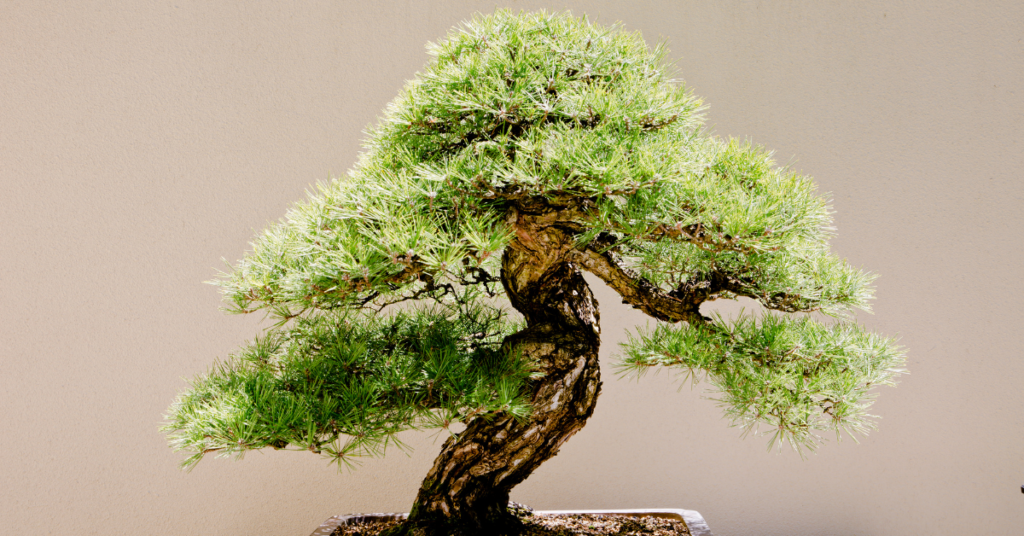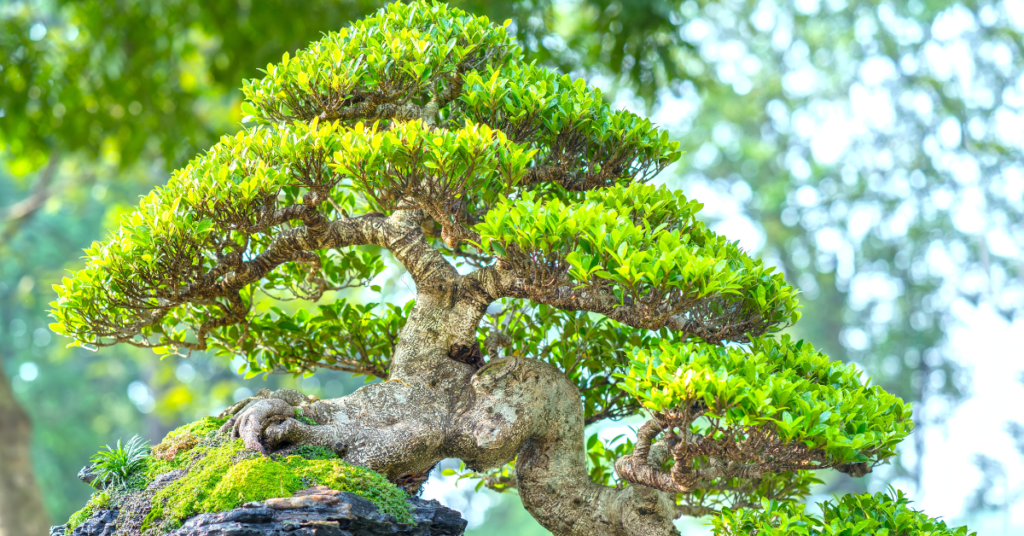Do Bonsai trees need water? Yes, bonsai trees require water to survive and thrive. It is essential to maintain a consistent watering schedule, ensuring that the soil remains evenly moist but not overly saturated. The frequency of watering depends on factors such as tree species, climate, and pot size. To determine when to water, assess the soil moisture by inserting a finger or chopstick into the soil; water when the top layer feels slightly dry. Overwatering or underwatering can harm the bonsai, so striking the right balance is crucial for its health and longevity.
Bonsai trees have been a cherished art form in Japan for centuries, and their popularity has only grown worldwide. These miniature trees are not only visually appealing but also require care and attention to maintain their health and longevity.
One of the most common questions people ask about bonsai trees is whether they need water or not. In short, the answer is yes, bonsai trees do need water. However, like any plant, overwatering can be just as harmful as underwatering.
Finding the right balance when it comes to watering your bonsai tree is crucial to its survival. In this article, we will explore the importance of watering your bonsai tree, how often you should water it, and some helpful tips to ensure your bonsai thrives.
Do Bonsai trees need water?
Indeed, bonsai trees need water for their sustenance and growth. Maintaining a regular watering routine is crucial, with the objective of keeping the soil consistently damp without causing waterlogging.
The intervals between watering sessions are influenced by various factors, such as the type of tree, environmental conditions, and the dimensions of the pot.
To gauge when it’s time to water, check the soil’s moisture content by inserting your finger or a chopstick into the soil; proceed with watering when the top layer starts to feel somewhat dry.
It’s important to avoid both overwatering and underwatering, as either can be detrimental to the bonsai’s overall health and long-term survival.
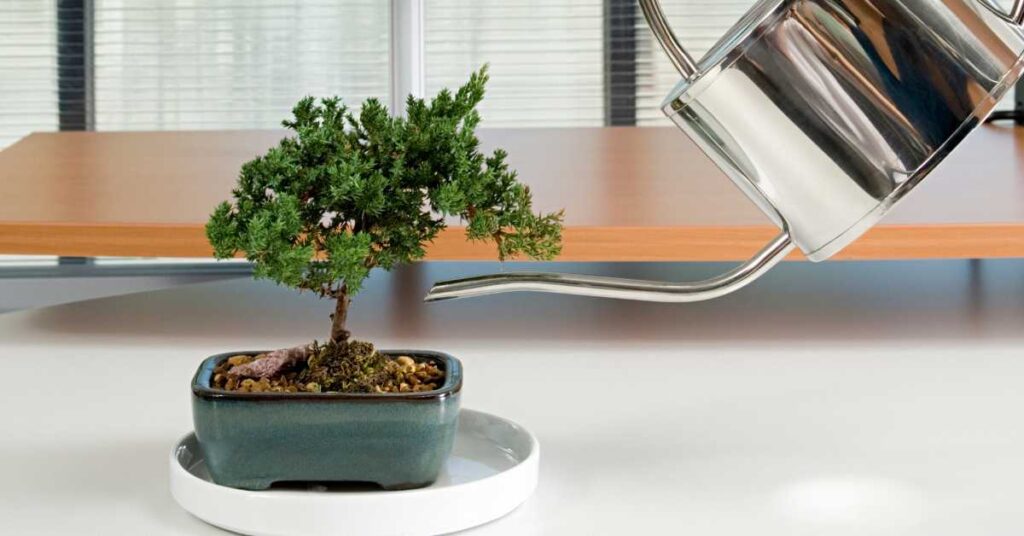
The Importance Of Watering Your Bonsai Tree
You may be wondering if your bonsai tree really needs water. After all, it’s small and doesn’t seem to require a lot of maintenance. However, watering is an essential aspect of caring for your bonsai tree. Without proper hydration, your tree will wither away and die.
The frequency of watering your bonsai tree depends on several factors. The size of the pot, the type of soil, and the climate in which you live all play a role in determining how often you should water your tree.
Generally, it’s recommended to check the soil moisture once a day and water when needed. You can use various tools such as a watering can or spray bottle to ensure that you’re giving your tree just the right amount of water.
With proper watering techniques and consistency, your bonsai will thrive for years to come.
Understanding Your Bonsai’s Water Needs
Watering your bonsai tree is crucial to its growth and overall health. As mentioned in the previous section, watering provides your bonsai with the necessary nutrients it needs to thrive. However, it’s important to note that not all bonsai trees require the same amount of water.
Understanding your bonsai’s water needs is essential to keeping it healthy. Watering frequency depends on several factors such as the species of tree, pot size, soil type, and climate conditions. Overwatering or underwatering can lead to stunted growth or even death of your bonsai tree.
It’s recommended to check the soil moisture level regularly by sticking your finger about an inch deep into the soil. If it feels dry, then it’s time to water your tree.
To help you better understand your bonsai’s water needs, here are some tips:
- Different species of bonsai trees have varying water requirements
- Use a well-draining soil mixture for optimal growth
- Water more frequently during hot and dry weather conditions
- Adjust watering frequency during winter months when there is less sunlight
By following these tips and paying close attention to your bonsai’s watering needs, you can ensure that your tree stays healthy and continues to grow beautifully over time. Remember, proper watering is just one part of caring for a bonsai tree – but it’s a crucial one!
Signs Your Bonsai Tree Needs Water
Oh, no! You mean to tell me that my precious bonsai tree needs water? Who would have thought that a living thing requires hydration to survive? Sarcasm aside, it’s easy to forget about watering frequency when it comes to bonsai trees. After all, they are small and contained – how much water could they possibly need?
But ignoring your bonsai’s thirst can lead to its demise. One way to determine if your bonsai tree needs water is by checking the soil moisture. Stick your finger two inches deep into the soil. If it feels dry, then it’s time for a drink. On the other hand, if the soil is still damp, wait a day or two before watering again.
Keep in mind that different types of bonsai trees may require different watering frequencies, so do some research on your specific species. Remember: just because you watered yesterday doesn’t necessarily mean you should skip today. Always check the soil first!
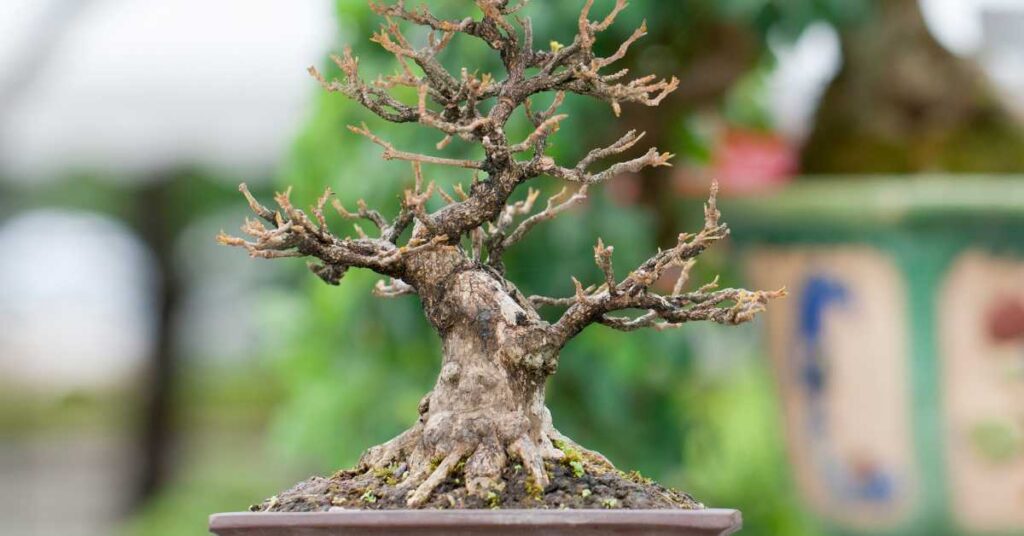
How Often To Water Your Bonsai Tree
As we have discussed in the previous section, it is important to recognize when your bonsai tree needs water. But once you have determined that your tree is thirsty, how often should you water it? Watering frequency and scheduling are important factors to consider in order to maintain the health and longevity of your bonsai.
Watering frequency will depend on a variety of factors such as the species of tree, size of pot, soil composition, and environmental conditions. However, here are some general guidelines to follow when establishing a watering schedule:
- Check the moisture level of the soil regularly by inserting a finger or chopstick into the soil about an inch deep. If it feels dry, it’s time to water. You can also use a moisture meter to regularly check.
- Water thoroughly until water runs out from the drainage holes at the bottom of the pot.
- Avoid overwatering by allowing the top layer of soil to dry out before watering again.
- In hot or dry weather conditions, you may need to increase watering frequency.
- Pay attention to any signs of stress or wilting in your bonsai tree as this may indicate a need for more frequent watering.
Remember that every bonsai tree is unique and may have different watering needs. By establishing a consistent watering schedule and paying close attention to your tree’s specific requirements, you can help ensure its health and vitality for years to come.
Choosing The Right Soil For Your Bonsai Tree
Did you know that choosing the right soil for your bonsai tree can greatly affect its growth and overall health? In fact, according to a study conducted by the American Bonsai Society, using the wrong soil mixture is one of the leading causes of bonsai tree failure. This just goes to show how important it is to take the time to choose the proper soil for your bonsai.
When it comes to choosing a pot for your bonsai tree, it’s important to consider both aesthetics and functionality. The pot should be proportionate in size to your tree and have adequate drainage holes. Additionally, consider the material of the pot as different materials can affect moisture retention in the soil.
Fertilization considerations are also crucial in maintaining a healthy bonsai tree. It’s recommended to use a slow-release fertilizer and only apply it during specific times of the year when your tree is actively growing. With these factors in mind, you’ll be on your way to providing optimal growing conditions for your beloved bonsai tree.
Proper Drainage For Your Bonsai Tree
After choosing the right soil for your bonsai tree, it is important to ensure proper drainage. Without good drainage, your tree’s roots can become waterlogged and begin to rot. This can lead to a weak and stunted bonsai.
To improve drainage, consider using a soil mixture that includes a high percentage of inorganic material such as perlite or pumice. Additionally, choose a pot size that allows for adequate drainage holes and space for the root system to grow.
By creating an environment where water can easily flow through the soil and out of the pot, you can help prevent root rot and promote healthy growth in your bonsai tree.
When it comes to watering frequency, there are several environmental factors to consider such as temperature, humidity, and sunlight exposure. It is also important to take into account the specific needs of your bonsai species as some may require more or less water than others.
As a general rule of thumb, it is better to underwater rather than overwater your bonsai. Wait until the top layer of soil feels dry before watering again and always check for proper drainage after each watering session.
By paying attention to these details, you can ensure that your bonsai tree receives just the right amount of water for optimal growth and health.
Watering Techniques For Your Bonsai Tree
Water is essential to the survival of any plant, including bonsai trees. However, it’s important to understand that bonsai trees have different watering needs compared to their larger counterparts.
Watering frequency is one of the most critical factors in maintaining your bonsai tree’s health. Overwatering or underwatering can lead to root rot or dehydration, which can cause irreversible damage.
To determine when your bonsai tree needs water, you need to check the soil moisture regularly. Insert a chopstick or a moisture meter into the soil and observe how dry it is. If the soil feels dry at a depth of about an inch or two, it’s time to water your tree. On the other hand, if the soil feels wet or moist, hold off on watering until it dries out.
Proper watering techniques are crucial in keeping your bonsai tree healthy and thriving. By monitoring its watering frequency and soil moisture consistently, you’re providing your tree with the optimal growing conditions it needs to flourish.
Remember that each bonsai tree has unique watering needs depending on its species, size, and location, so always do some research beforehand to ensure you’re giving your tree what it needs to thrive.
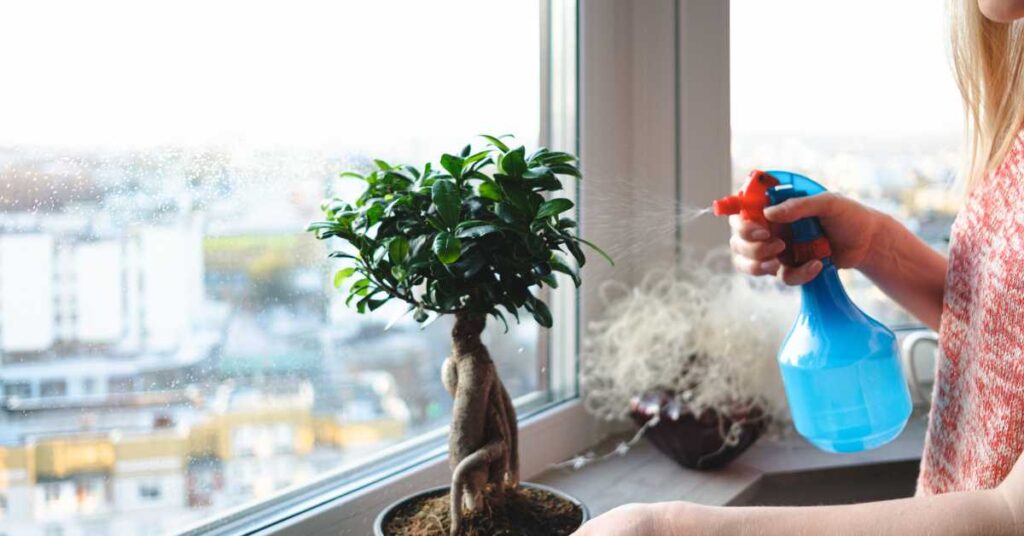
Avoiding Overwatering Your Bonsai Tree
Your bonsai tree is like a delicate flower, requiring just the right amount of water to thrive. Overwatering, however, can drown your tiny tree and lead to its demise. To keep your bonsai healthy and happy, it’s essential to prevent drowning by following a watering schedule that works for you.
Preventing drowning may seem like an easy task, but it requires more than just giving your bonsai a little drink every day.
Here are three tips to help avoid overwatering:
- Check the soil: Before watering your bonsai, stick your finger about an inch deep into the soil. If it feels dry, it’s time to water. If it’s still moist, wait a day or two before checking again.
- Use the right pot: Bonsai pots are designed to allow for proper drainage and airflow. Make sure your pot has enough holes in the bottom and is the right size for your tree.
- Be consistent: Develop a watering schedule that works for you and stick to it. Some bonsais need more water than others depending on their size and species.
By following these simple steps and being mindful of how much water you give your bonsai, you can ensure that it will live a long and healthy life under your care.
Tips For Watering Your Bonsai Tree During Different Seasons
Watering your bonsai tree is crucial to its survival, but the amount and frequency of watering depend on the season. During the summer months, bonsai trees require more water than they do during winter because of the increased heat and humidity.
It is best to water your bonsai in the morning or evening when temperatures are cooler. Using a watering can or hose with a gentle spray nozzle can help prevent soil erosion while providing adequate moisture.
During fall and winter, it is important to reduce watering as your bonsai enters a period of dormancy. Overwatering during this time can lead to root rot and other fungal diseases. It may be helpful to use a moisture meter to determine when your bonsai needs water.
If the soil feels dry, it is time to water. Additionally, alternative watering methods such as misting or placing ice cubes on top of the soil can provide hydration without over-saturating the roots. When using alternative watering methods, be sure to monitor your tree’s moisture levels closely.
| Watering Tool | Pros | Cons |
|---|---|---|
| Watering Can | Allows for targeted watering directly at soil level | Can cause soil erosion if not used carefully |
| Spray Nozzle Hose | Provides even coverage for larger trees | May not be suitable for smaller bonsais |
| Moisture Meter | Accurately measures soil moisture levels | May not work well in compacted soils |
| Misting Bottle | Provides gentle hydration without over-saturating roots | Time-consuming for larger trees |
| Ice Cubes | Slowly releases hydration into soil over time | Can cause temperature shock if too many are used |
Remember that proper watering is essential for maintaining a healthy bonsai tree, so take care in choosing which method works best for you and your plant’s individual needs. By paying attention to seasonal changes and monitoring moisture levels regularly, you will ensure that your bonsai thrives for years to come.
Troubleshooting Common Watering Problems For Your Bonsai Tree
Many people believe that bonsai trees do not need much water due to their small size. However, this is a common misconception that can lead to the death of your bonsai tree.
Just like any other plant, bonsai trees need water in order to survive and thrive. In fact, the amount of water your bonsai tree needs depends on several factors such as the species of the tree, the soil type, and the environment it is in.
Watering frequency is one of the most important factors to consider when taking care of your bonsai tree. Overwatering or underwatering can cause serious harm to your tree. Finding the right balance for your bonsai tree can be tricky but with time and practice, you will develop a routine that works for you and your plant.
Here are some tips to help you troubleshoot common watering problems for your bonsai tree:
- Use a moisture meter to determine when it’s time to water
- Water thoroughly until excess water drains out
- Adjust watering frequency based on season and climate changes
- Check soil type to ensure proper drainage
- Avoid using hard tap water as it can contain harmful minerals
Remember, finding the right balance between watering frequency and soil type is crucial for maintaining a healthy bonsai tree. With these tips in mind, you’ll be able to troubleshoot common watering problems and keep your bonsai thriving for years to come.
Frequently Asked Questions
What Are Some Common Mistakes People Make When Watering Their Bonsai Tree?
One common mistake people make when watering their bonsai tree is overwatering, which can lead to root rot and ultimately harm the health of the plant.
Overwatering prevention is crucial to maintaining a healthy bonsai tree. It’s important to pay attention to the soil quality as well, as poor soil can prevent proper drainage and contribute to overwatering issues.
When watering your bonsai tree, be sure to check the moisture level of the soil before adding more water. It’s better to underwater than overwater, so err on the side of caution and only water when necessary.
By being mindful of these tips, you can ensure that your bonsai tree thrives for years to come.
Can Tap Water Be Harmful To My Bonsai Tree?
Wow, have you ever considered that tap water could be the silent killer of your beloved bonsai tree?
Water quality is essential for any plant’s survival, and bonsai trees are no exception. While tap water is often convenient, it can contain harmful chemicals that can stunt or even kill your tree’s growth over time.
Luckily, there are alternative sources of water that you can use to keep your bonsai healthy and strong. Consider using filtered or distilled water instead of tap water to ensure your bonsai gets the best possible care.
Is It Possible To Underwater A Bonsai Tree?
It is possible to underwater a bonsai tree, which can lead to dehydration and harm the plant. Signs of dehydration include wilting, yellowing leaves, and dry soil.
To prevent this, it’s important to water your bonsai regularly and ensure that the soil is moist but not soaked. Additionally, misting the tree can provide benefits such as increasing humidity levels and promoting healthy growth.
So be sure to keep an eye on your bonsai’s water needs to ensure it stays healthy and thriving.
How Can I Tell If My Bonsai Tree Is Getting Too Much Water?
Worried your bonsai tree’s roots are drowning? Watch out for signs of overwatering!
Leaves turning yellow or dropping off, soil that’s consistently damp, and lack of new growth could all be indicators that your precious plant is getting too much water.
Adjusting watering frequency is key to avoiding this issue – make sure you’re not watering too often or too much at once.
Keep a close eye on your bonsai tree’s health and make adjustments as necessary to keep it thriving.
Do Different Types Of Bonsai Trees Require Different Watering Schedules?
Different types of bonsai trees require different watering techniques depending on the type of soil mix they are planted in.
It is important to understand the appropriate watering schedule for your specific bonsai tree in order to avoid over or under-watering.
Some bonsai trees prefer a well-draining soil mix that requires more frequent watering, while others do better with a denser soil mix that holds moisture for longer periods of time.
Additionally, factors like temperature and humidity also play a role in determining how often to water your bonsai tree.
By understanding these variables and monitoring the moisture level of your soil regularly, you can ensure your bonsai tree stays healthy and thrives for years to come.
Conclusion
In conclusion, it is crucial to understand the watering requirements of your bonsai tree. Overwatering or underwatering can be detrimental to its health and longevity.
One common mistake people make is watering their bonsai on a schedule rather than observing the soil moisture level. It’s important to check the soil before watering to ensure it’s not too wet or dry.
Additionally, tap water can contain harmful chemicals that can damage your bonsai tree. Using filtered or distilled water is recommended for better results.
Remember, each type of bonsai tree has different watering needs, so it’s important to research and tailor your watering schedule accordingly.
As the saying goes, ‘a watched pot never boils,’ but in this case, watching your bonsai tree’s water intake will help it thrive for years to come.


